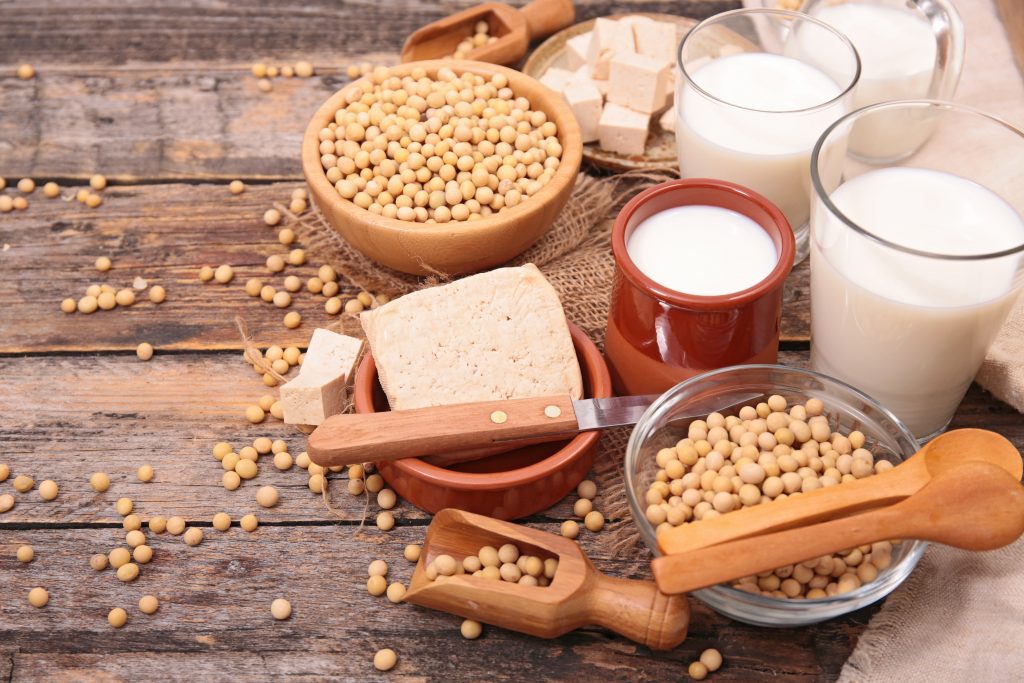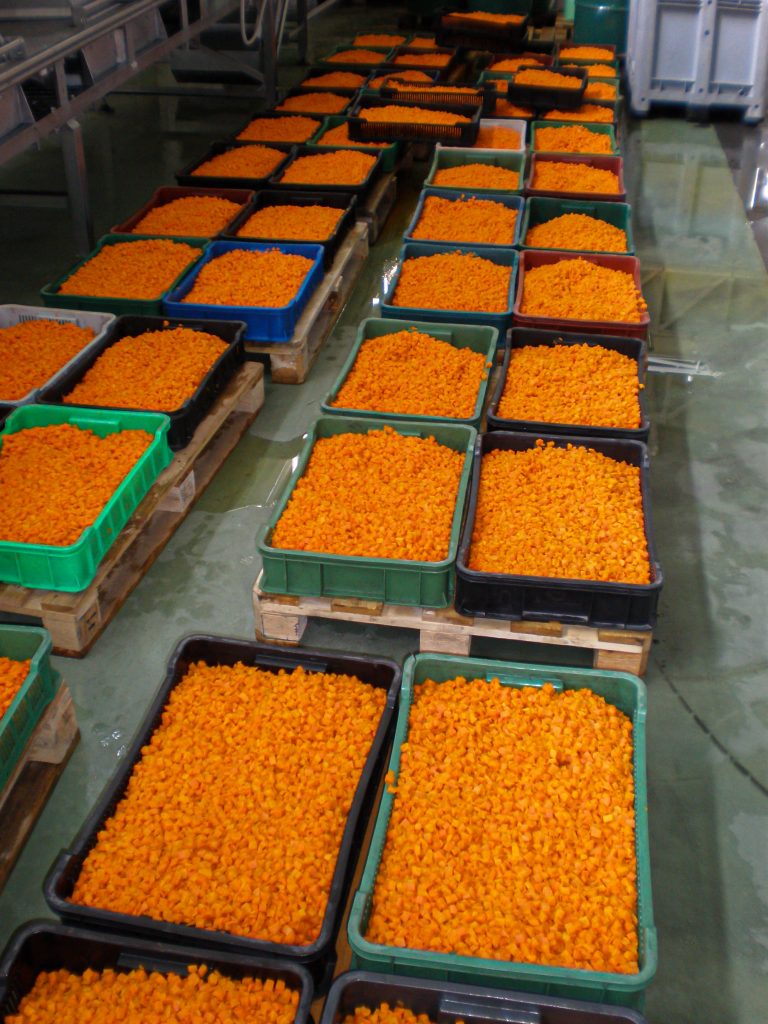Dr Vijaya Raghavan – Developing Food Processing Methods Through Scientific and Engineering Solutions
The food processing industry generates enormous quantities of waste every year. On top of this, the way that food is processed can have negative impacts on the health of consumers. Therefore, it is vitally important to develop new food processing methods that consider human health while producing minimal waste. Dr Vijaya Raghavan and his research group at McGill University, Montreal, have been applying their expertise in chemistry and engineering to develop and optimise food processing techniques, to ensure the future health of people and the environment.
Food Processing
Today, almost all of the food we consume has been processed in some way. Food processing methods offer a range of important benefits, such as extending shelf life, and providing foods that are more palatable or edible than their unprocessed counterparts.
For instance, the various processing steps involved in converting wheat crops into loaves of bread – from harvesting and milling, to kneading and baking – unlock the nutrition contained within the raw grain, converting it into an edible form. Additionally, fish processing often involves gutting, deboning and washing, to obtain fresh meat that can be either transformed into safe and palatable products, or frozen or smoked to preserve the meat for months, or even years. Such preservation techniques allow consumers to enjoy fish well beyond the harvest season and far from where the fish were caught.
Without food processing, the needs of urban populations would be difficult to fulfil, and our selection of foods would be extremely limited, particularly in winter. However, certain aspects of food processing raise concerns over both environmental sustainability and the health of consumers.
For example, the food processing industry generates a phenomenal amount of waste each year, both in terms of packaging materials and wasted food. On top of this, different processing methods can alter food on a chemical level, which can lead to negative health impacts. To address these issues, Dr Vijaya Raghavan and his research team at McGill University have been investigating various aspects of the food processing industry, in order to develop and optimise methods.

Converting Seafood Waste into Useful Products
Seafood makes up a huge proportion of the food consumed worldwide. However, as seafood is particularly perishable, much work goes into maximising its shelf life. During processing, the less desirable parts of fish, such as the head, scales, fins and bones, are typically discarded. Studies have shown that almost half of harvested seafood is wasted. Most of this seafood waste ends up in landfill, or is simply dumped back into the ocean – causing serious environmental problems.
Dr Raghavan and his colleagues have been working to address this problem by developing methods that transform this waste into useful materials. In a recent study, they explored a technique known as hydrothermal carbonisation. This method, which converts biomass into useful carbon-rich materials, has been widely used to convert plant matter into a coal-like biofuel called hydrochar. However, it is far less commonly used for treating animal waste.
Typically, hydrothermal carbonisation is performed by raising the temperature of a material to around 200°C under high pressure and in the presence of water. Dr Raghavan and his team employed a modified version of this method, which uses microwave radiation for heating. Microwaves can heat an object by causing water molecules to rapidly rotate inside the object, which generates heat directly inside the material.
The team started the process by mashing fish waste in a blender and treating it with a cocktail of enzymes, to further break down the different components of the waste. Then, they placed the mixture in an enclosed container and heated it using microwave radiation. With heating, the pressure in the container increased, and under these conditions the waste became converted into hydrochar. The researchers collected and dried the hydrochar, and took samples for analysis.
They found that their hydrochar was of similar quality to that obtained from plant waste. This was very promising, as it meant that the team’s seafood-derived hydrochar could be used as a sustainable, biofuel-based alternative to coal. Additionally, Dr Raghavan suggests that the hydrochar would make a good fertiliser for soil, extending its useful applications further. Liquid derived from the process is also valuable for several other applications.
The team’s approach could revolutionise the fish processing industry, significantly cutting down on the amount of waste produced worldwide, while also providing new sustainable sources of energy, fertiliser and other products.
Reducing Risks for Allergy Sufferers
About 3% of the global adult population suffers from at least one type of food allergy, which represents a significant threat to their health. Peanut allergies are particularly serious, affecting roughly 1% of the US population. The prevalence of peanut allergies is largely because there are several different proteins in peanuts that can cause a dangerous immune response in affected people.
To add to this complexity, food processing can lead to structural changes in these proteins, making them more difficult to understand. In fact, certain structural changes to peanut proteins have been shown to reduce digestibility, and even increase the likelihood of triggering a severe allergic reaction compared to the unaltered protein. As peanuts are almost always processed before they reach the consumer, it is crucial to better understand the structural changes induced by different processing conditions.
Dr Raghavan and his colleagues have been investigating the nature of one particular peanut protein, called ARA-h-6. Through computational simulations, the team exposed this protein to different electric field strengths and various temperatures, to explore their effects on its structure. They found that while electric fields had a minor effect, increased temperatures did indeed have a large impact on the structure of the protein.
The team’s work provides useful insights into how exactly this protein changes under various different processing conditions. Such computational simulations reveal far more structural detail compared to lab-based experiments, which only show the protein’s structure before and after processing, without demonstrating what happens during the process. With further insights into the digestibility of different structures of ARA-h-6, and the forms that are likely to trigger an allergic response, the team’s insights could be used to develop new methods of processing peanuts to ensure healthier and safer foods.

Improving Digestibility of Soy-based Foods
In another study, Dr Raghavan and his team used computational simulations to explore structural changes in a protein found in soybeans. Specifically, they studied the effects of processing on the ‘soybean trypsin inhibitor protein’, which is known to block the action of enzymes that help us to digest other nutritional proteins. By better understanding how to change or destroy this protein’s structure, its impact could be reduced, leading to soy-based foods that are more easily digested, and thus healthier.
In their study, Dr Raghavan’s team found that the soybean trypsin inhibitor protein is unusually stable, and did not change much when exposed to different electric fields and elevated temperatures. Their research reveals the chemical and structural reasons behind this protein’s stability, which may help scientists to develop ways of destroying it in a targeted way.
Hopefully, the insights gleaned in this study will inform the development of new methods for processing soybeans, to maximise the digestibility and nutritional value of soy-based foods. As soybeans are considered a more sustainable and ethical source of protein than meat, such methods would help to ensure the future sustainability of our food supply.

Drying Carrots with Microwaves
When it comes to preserving food, drying is a simple and effective processing method. It does not require any chemical additives and is often energy efficient. Therefore, much research goes into developing the best drying methods that do not sacrifice food quality.
One of the prominent methods used in this field is microwave drying. This works by heating the substance with microwaves, causing internal water to be driven to the surface where it evaporates. This process can also cause channels to open in the material as the water is removed, which in turn can lead to even faster drying times.
In order to achieve the most efficient drying using this method, the centre of the food needs to be much hotter than the surface, to optimise the movement of water. However, if the temperature difference is too large, heat-sensitive nutrients can be degraded and lost from the food. Therefore, Dr Raghavan has been investigating microwave drying, to better understand how it can be optimised.
His team uses carrots as a test food in their studies. The researchers began by cutting carrots into cubes with precise dimensions, which were submerged in hot water and then rapidly cooled. They then used a microwave drying unit that they had assembled using a microwave oven and a hot air generator. Using this setup, they performed a series of trials to monitor the internal and external temperatures of the cubes, as well as how much they decreased in size, and changes in their moisture content.
Through this, the team was able to determine the optimal conditions for drying carrot pieces, while maintaining the highest level of vitamin C. They were also able to identify the conditions that lead to the highest rehydration capacity, which is another important factor to consider.
Overall, the team’s technique shows a lot of promise as a method for preserving carrots and other root vegetables, while also maintaining their nutritional value.

The Future of Food Processing
Dr Raghavan and his team have utilised their expertise in food chemistry and engineering to optimise various aspects of the food processing industry. Hopefully, their research and methods will soon be used by the food industry towards ensuring a more sustainable, safer and healthier future for all.
Reference
https://doi.org/10.33548/SCIENTIA700
Meet the researcher

Dr Vijaya Raghavan
Department of Bioresource Engineering
McGill University
Quebec
Canada
Dr Vijaya Raghavan earned his BEng at Bangalore University, before obtaining his MSc in Agricultural Engineering from the University of Guelph, Ontario. He then pursued and completed his PhD at Colorado State University, before moving to a teaching position at McGill University, Quebec, where he holds his current position as a professor in the Department of Bioresource Engineering. Here, his research focuses on the methodology used in food processing, including storage and waste management, with a view to enhancing food security and sustainability. He has directed several projects funded by the Canadian Government and was recently made a Director of the Royal Society of Canada. In 2019, he was awarded with the Lifetime Achievement Award from the Society of Tropical Agriculture for significant contributions to the field.
CONTACT
E: vijaya.raghavan@mcgill.ca
W: https://www.mcgill.ca/bioeng/faculty-and-staff/vijaya-raghavan
KEY COLLABORATORS
Yvan Gariepy, McGill University
Dr Valérie Orsat, McGill University
Dr Arun Mujumdar, National University of Singapore
Dr Clément Vigneault, Agriculture and Agri-food Canada (AAFC)
Dr Michael Ngadi, McGill University
Dr Boris Tartakovsky, National Research Council Canada
Dr Animesh Dutta, University of Guelph
Dr Stéphane Godbout, Institut de receherche et de développement en agroenvironnement
Dr Nachimuthu Varadharaju, Tamid Nadu Agricultural University
Dr Satya Dev, Florida Agricultural and Machinery University
Dr Sai Vanga, Daiya Foods, Vancouver
Dr Zhenfeng Li, Jiangnan University
Dr Ashutosh Singh, University of Guelph
Dr Sakamon Devahastin, King Mongkut’s University of Technology Thonburi
Dr Gabriella da Rosa, Universidade Federal do Pampa
Dr Marie-Josée Dumont, McGill University
Dr Mark Lefsrud, McGill University
Dr Darwin Lyew, McGill University
Dr Brenda Alvarez Chavez, GECA Environnement
FUNDING
Natural Sciences and Engineering Research Council of Canada (NSERC)
Fonds de recherche du Québec – Nature et technologies (FRQNT)
Ministère de l’Agriculture, des Pêcheries et de l’Alimentation (MAPAQ)
Canadian International Development Agency (CIDA)
International Development Research Centre (IDRC)
Canadian Foundation for Innovation (CFI)
FURTHER READING
W Xu, C Song, Z Li, F Song, S Hu, J Li, G Zhu, GSV Raghavan, Temperature gradient control during microwave combined with hot air drying, Biosystems Engineering, 2018, 169, 175.
S Kannan, Y Gariepy, GSV Raghavan, Optimization and characterization of hydrochar produced from microwave hydrothermal carbonization of fish waste, Waste Management, 2017, 65, 159.
BH Vagadia, SK Vanga, A Singh, V Raghavan, Effects of thermal and electric fields on soybean trypsin inhibitor protein: A molecular modelling study, Innovative Food Science & Emerging Technologies, 2016, 35, 9.
SK Vanga, A Singh, Vi Raghavan, Effect of thermal and electric field treatment on the conformation of Ara h 6 peanut protein allergen, Innovative Food Science & Emerging Technologies, 2015, 30, 79.

Want to republish our articles?
We encourage all formats of sharing and republishing of our articles. Whether you want to host on your website, publication or blog, we welcome this. Find out more
Creative Commons Licence
(CC BY 4.0)
This work is licensed under a Creative Commons Attribution 4.0 International License. 
What does this mean?
Share: You can copy and redistribute the material in any medium or format
Adapt: You can change, and build upon the material for any purpose, even commercially.
Credit: You must give appropriate credit, provide a link to the license, and indicate if changes were made.
More articles you may like
Dr Lifei Wang | Can Species Distribution Models Inform Us About Future Ecosystems?
The world is buzzing with news about how human activities and climate shifts are reshaping our ecosystems. Have you ever wondered how life will adapt to this rapidly changing world? Ecologists might be able to predict how different species will live in future using computer simulations. Dr Lifei Wang at the University of Toronto Scarborough investigates how different stimulations work under varying conditions to provide new insights into what may lie ahead.
Dr Yong Teng | Improving the Outlook for Head and Neck Cancer Patients
Dr Yong Teng at the Emory University School of Medicine is working with colleagues to overcome the high mortality of individuals diagnosed with cancers affecting the head and neck. One of his approaches is based on understanding the particular mechanisms of the ATAD3A gene, which new insights suggest are closely related to cancers affecting the head and neck.
Dr Tsun-Kong Sham – Dr Jiatang Chen – Dr Zou Finfrock – Dr Zhiqiang Wang | X-Rays Shine Light on Fuel Cell Catalysts
Understanding the electronic behaviour of fuel cell catalysts can be difficult using standard experimental techniques, although this knowledge is critical to their fine-tuning and optimisation. Dr Jiatang Chen at the University of Western Ontario works with colleagues to use the cutting-edge valence-to-core X-ray emission spectroscopy method to determine the precise electronic effects of altering the amounts of platinum and nickel in platinum-nickel catalysts used in fuel cells. Their research demonstrates the potential application of this technique to analysing battery materials, catalysts, and even cancer drug molecules.
Dr Michael Cherney – Professor Daniel Fisher | Unlocking Woolly Mammoth Mysteries: Tusks as Hormone Time Capsules
The impressive tusks found on proboscideans (the order of mammals that includes elephants, woolly mammoths, and mastodons) are like time capsules, preserving detailed records of their bearers’ lives in the form of growth layers and chemical traces. Frozen in time for thousands of years, these layers can unlock secrets about the lives of long-extinct relatives of modern elephants. Dr Michael Cherney and Professor Daniel Fisher from the University of Michigan used innovative techniques to extract and analyse steroid hormones preserved in woolly mammoth tusks. This ground-breaking work opens new avenues for exploring the biology and behaviour of extinct species.




